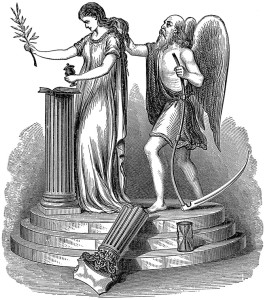In this episode of Symbols and Symbolism we look at a short entry from Albert Mackey’s Encyclopedia of Freemasonry examining the figure of the weeping virgin. A newer invention in the symbolism of Freemasonry, Mackey draws an ancient parallel to its cryptic iconography.

The Weeping Virgin with disheveled hair, in the Monument of the Third Degree used in the American Rite, is interpreted as a symbol of grief for the unfinished state of the Temple.
Jeremy Cross, who is said to have fabricated the monumental symbol, was not, we are satisfied, acquainted with Hermetic Science. Yet a woman thus portrayed, standing near a tomb, was a very appropriate symbol for the Third Degree, whose dogma is the resurrection.
In Hermetic Science, according to Nicolas Flammel (Hieroglyphics, chapter xxxii), a woman having her hair disheveled and standing near a tomb is a symbol of the soul.
Jeremy Cross (b.1783, d. 1861) became a mason in 1808 and soon became a student of Thomas Smith Webb. In 1819 he published The True Masonic Chart or Hieroglyphic Monitor, in which he borrowed liberally from the previous work of Webb. The Weeping Virgin first appeared as an illustration as rendered by the American copperplate engraver Amos Doolittle, appearing in Crosse’s The True Masonic Chart.
- More on the Broken Column
- More on Time in Freemasonry
- More on Jeremy Cross at Phoenixmasonry
- More in the Symbols and Symbolism series

Pingback: Robert Read (1828-1859) Headstone | To Die for Images